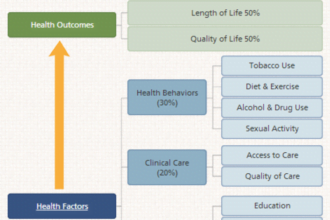First published in the Harvard Business Review
First published in the Harvard Business Review
 Many hospitals, including the Cleveland Clinic, are implementing a variety of strategies to improve the patient experience —an issue that’s rapidly becoming a top priority in health care. The Accountable Care Act now links performance related to patient-experience metrics to reimbursement. For the first time, the pay of hospitals and eventually individual providers will be partly based on how they are rated by patients. Few disagree on the importance and the need to be more patient centric, but what exactly is the “patient experience”?
Many hospitals, including the Cleveland Clinic, are implementing a variety of strategies to improve the patient experience —an issue that’s rapidly becoming a top priority in health care. The Accountable Care Act now links performance related to patient-experience metrics to reimbursement. For the first time, the pay of hospitals and eventually individual providers will be partly based on how they are rated by patients. Few disagree on the importance and the need to be more patient centric, but what exactly is the “patient experience”?
A 2012 industry survey asked top hospital leaders (CEOs, COOs, and others) what was necessary to improve the patient experience. The top six recommendations included: new facilities, private rooms, food on demand, bedside-interactive computers, unrestricted visiting hours, and more quiet time so patients could rest. There was one problem with them: They were not based on a systematic examination of what most patients really wanted. In other words, hospital executives wanted to focus on what they felt were important drivers of the patient experience but didn’t know for sure.
To truly improve the patient experience, it is important to get the patient’s perspective. National trends in data on the U.S. patient experience suggest that some groups of patients regularly score their experiences higher than others.
For example, surgical patients tend to give hospitals higher ratings than patients admitted with chronic medical conditions. Surgical patients may view or interpret their experience differently. Consider a patient who underwent surgery for a broken leg. If the patient receives high-quality health care (her leg was fixed, her questions were answered, she feels better, and she understood what was being done to her), she may not care whether she believed her providers were treating her with courtesy or respect or showed her compassion.
Now consider a patient who consistently uses the health care system — someone with multiple, chronic medical conditions that remain incurable and are only treatable from a maintenance standpoint. If he doesn’t feel that his caregivers are compassionate, that may heavily influence his overall perception of the experience. Since his relationship with health care givers is more prolonged (or permanent), he may need more of the “human side” of caring.
Why is it important for caregivers to know the drivers of patient experience? First, not being clear about the drivers can often be a significant barrier to launching a patient-experience initiative. Second, knowing the drivers helps leaders identify the most effective ways to achieve quick victories. Third, the economics of the levers is quite different. Improving some of these dimensions (such as providing private rooms) would be cost prohibitive for most hospitals. Others (such as improving communication between patients and caregivers) could reduce the overall cost of providing health care and also improve medical outcomes.
Faced with the task of understanding the drivers of patient experience, health care organizations have taken — and can take — multiple approaches to discerning the drivers of patient experience. Below, we review briefly some of the innovative approaches to better understand patient needs that have been tried in various organizations, including the UCLA Medical Center in Los Angeles, Methodist Hospital in Houston, St. Joseph’s Hospital in Phoenix, and the Cleveland Clinic.
Create patient advisory councils. A very simple but effective approach in many contexts is to identify a group of patients that can act as the customers’ “voice” within the organizations. It is easy for an organization to lose touch with its customers’ evolving needs.
Today, Voice of the Patient Advisory Councils are used at the Cleveland Clinic to ensure that the organization does not lose track of patients’ needs. Councils have assisted with redesigning waiting rooms, providing advice on improving the admission guide, and helping managers better understand communication needs in the hospital.
Dig deeper into patients’ experiences. Hospitals can use data from the Hospital Consumer Assessment of Healthcare Providers and Systems (HCAHPS) — the patient-satisfaction surveys conducted for the Centers for Medicare and Medicaid Services — to compare how their performance compares with that of other U.S. hospitals. Hospitals can leverage the HCAHPS data better by both digging deeper into the data and paying attention to anecdotal comments and complaints. This allows hospitals to understand not only how their patients feel about their experience but also whythey felt the way they did.
Using such a process, the Cleveland Clinic found that patients were more satisfied when they had caregivers who smiled more. But when the Clinic dug deeper, it discovered that patients were not concerned about whether about their caregivers had happy expressions per se; rather, they were concerned when doctors’ and nurses’ had stern expressions because they interpreted them to mean that caregivers were concealing problems from them. This caused anxiety and, as a result, adversely affected patient satisfaction.
Have leaders make regular rounds. At UCLA Medical Center, as well as other hospitals across the country, senior leaders (both clinical and non-clinical) make a habit of wandering throughout the hospital and talking to patients, their families, and caregivers (including physicians, nurses, food-service workers who deliver the meals, and environmental-service workers who clean the rooms. These rounds need to be done on a regular basis and at least once a month. Such direct contact provides leaders with a firsthand understanding of patient needs.
This is important for two reasons. One, it is easy for leaders — even clinical leaders in hospitals who have direct patient contact in the normal course of performing their jobs — to lose touch with patient needs. Two, leadership rounds are an important means of exposing non-medical leaders in finance, operations, and other areas of the hospitals to the front lines of patient care. Finally, by regularly seeing and hearing with their own eyes and ears what’s happening on the front lines of patient care, leaders can help identify problems and opportunities for improvement.
Tell stories. There is nothing more moving than the incredible stories that patients relay about their experiences in the hospital. Sharing these stories — both good and bad — is important to employees. The good stories highlight the importance of their roles and demonstrate the incredible gratitude that patients have for their work. The bad stories often help explain the negative feelings about the hospital that some patients have. (At the Methodist Hospital in Houston, CEO Marc Bloom opens every meeting of the board of trustees by relaying a patient’s account of his or her stay. Sometimes it was good and sometimes bad. At the end, he reminds everyone that “this is what we do.”)
We are big fans of analyzing data to understand and improve patient experience. However, presentations that rely on excessive amounts of data can be dry and uninspiring. Conveying the same message through a well-told story can be powerful and inspirational. Also, storytelling can help strengthen caregivers’ emotional bonds with the organization and their jobs, which, in turn, can make it easier to engage employees in the organization’s mission to deliver world-class care to patients.
Leaders of health care organizations in recent years have focused primarily on delivering superior medical outcomes at lower costs. In addition, they also need to focus on improving the patient experience. A poor experience compromises a hospital’s reputation among patients and other physicians and adversely affects employees’ engagement levels. Moreover, with the changes in the reimbursement policies in many countries, it can have a negative impact on a hospital’s economics. But improving the patient experience will be hard to do without a better understanding of what patients really want. We hope others will offer comments and share what they’ve learned from their own efforts to understand what drives patient satisfaction.









